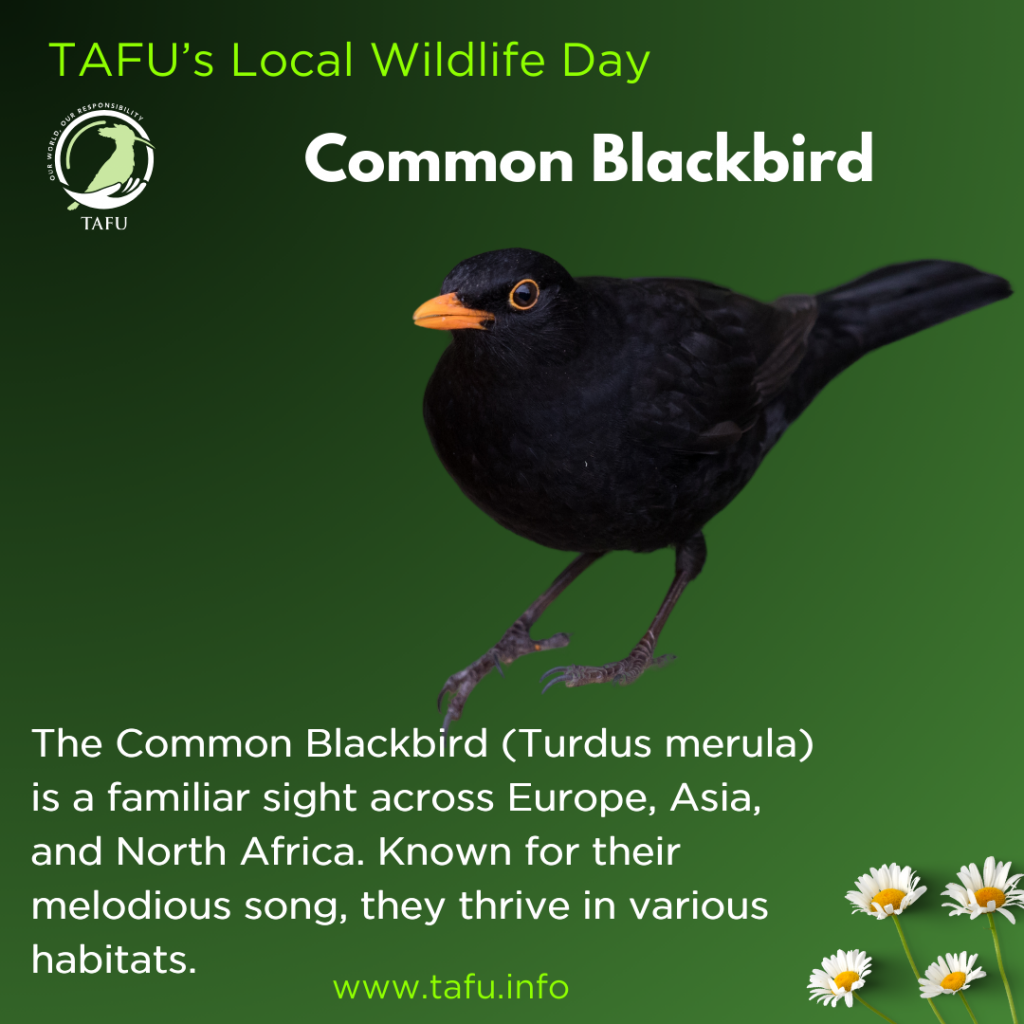Common Blackbird
As part of the countdown to TAFU’s Local Wildlife Day on the 11th of July – Species no. 25.
Stay tuned – 18 more days and 18 more species until then!
The Common Blackbird (Turdus merula) is a familiar and widespread member of the thrush family. Males are easily recognisable by their glossy black plumage, bright yellow bills, and eye-rings, whereas females are brown with lighter streaks and a brownish bill. Juvenile blackbirds resemble females but are often more streaked with a reddish tinge.
Common Blackbirds are highly adaptable and inhabit a wide range of environments including gardens, woodlands, parks, and urban areas across Europe, North Africa, and parts of Asia. They have also been introduced to Australia and New Zealand. Depending on their geographic location, some populations are resident while others migrate during the winter.
These birds are omnivorous, feeding on a variety of foods such as insects, earthworms, berries, and fruits. They forage primarily on the ground, turning over leaf litter to find invertebrates. Blackbirds are also known for their melodious and varied song, which is a common sound in many gardens.
Nesting typically occurs in dense shrubs or trees, where the female builds a cup-shaped nest from grass, twigs, and mud. She lays 3-5 eggs, which are incubated for about two weeks before hatching. Both parents participate in feeding the chicks until they fledge after another two weeks. They typically have 2-3 brood per season, however some have been observed to have 4 broods!
Blackbirds are territorial during the breeding season, fiercely defending their space from intruders. Outside of the breeding season, they can be more sociable, especially in wintering grounds where they may form loose flocks.
As blackbirds need a mix of dense shrubs for nesting and a variety of food sources such as berries and mealworms, it is important to keep our gardens as varied and natural as possible.

